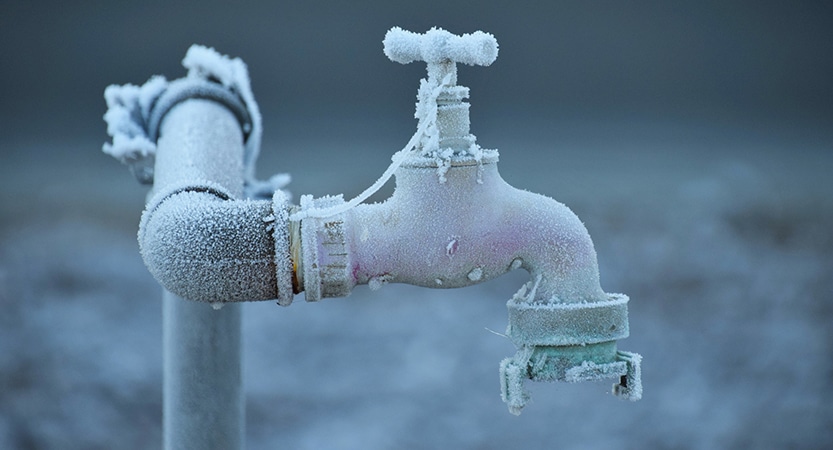Essential Advice for Avoiding Frozen Pipes in Winter Conditions
Essential Advice for Avoiding Frozen Pipes in Winter Conditions
Blog Article
What're your beliefs on How To Avoid Freezing Pipes?

Cold weather can wreak havoc on your plumbing, particularly by freezing pipelines. Below's exactly how to avoid it from taking place and what to do if it does.
Intro
As temperatures drop, the risk of icy pipelines increases, possibly resulting in costly fixings and water damages. Recognizing exactly how to prevent icy pipes is critical for house owners in cold environments.
Understanding Icy Pipes
What creates pipelines to ice up?
Pipes freeze when revealed to temperatures listed below 32 ° F (0 ° C) for extended durations. As water inside the pipes freezes, it expands, taxing the pipeline walls and possibly creating them to burst.
Risks and problems
Frozen pipes can result in supply of water disruptions, home damages, and expensive fixings. Ruptured pipes can flooding homes and create extensive structural damage.
Signs of Frozen Water Lines
Determining icy pipelines early can stop them from breaking.
Exactly how to identify frozen pipes
Search for decreased water flow from faucets, uncommon odors or noises from pipes, and visible frost on exposed pipelines.
Prevention Tips
Insulating vulnerable pipes
Wrap pipes in insulation sleeves or make use of warmth tape to secure them from freezing temperatures. Focus on pipelines in unheated or outside areas of the home.
Home heating methods
Keep indoor spaces properly warmed, particularly areas with pipes. Open cupboard doors to allow cozy air to distribute around pipes under sinks.
Securing Outside Pipes
Garden hose pipes and outside faucets
Separate and drain yard pipes before winter months. Mount frost-proof spigots or cover outside taps with insulated caps.
What to Do If Your Pipelines Freeze
Immediate actions to take
If you presume icy pipes, keep faucets open to soothe pressure as the ice melts. Utilize a hairdryer or towels taken in warm water to thaw pipes gradually.
Long-Term Solutions
Architectural changes
Consider rerouting pipes away from exterior walls or unheated locations. Add additional insulation to attic rooms, basements, and crawl spaces.
Updating insulation
Purchase top notch insulation for pipes, attic rooms, and walls. Correct insulation assists preserve consistent temperatures and decreases the risk of icy pipes.
Final thought
Avoiding frozen pipes needs positive steps and quick feedbacks. By comprehending the causes, indicators, and safety nets, property owners can protect their pipes during winter.
5 Ways to Prevent Frozen Pipes
Drain Outdoor Faucets and Disconnect Hoses
First, close the shut-off valve that controls the flow of water in the pipe to your outdoor faucet. Then, head outside to disconnect and drain your hose and open the outdoor faucet to allow the water to completely drain out of the line. Turn off the faucet when done. Finally, head back to the shut-off valve and drain the remaining water inside the pipe into a bucket or container. Additionally, if you have a home irrigation system, you should consider hiring an expert to clear the system of water each year.
Insulate Pipes
One of the best and most cost-effective methods for preventing frozen water pipes is to wrap your pipes with insulation. This is especially important for areas in your home that aren’t exposed to heat, such as an attic. We suggest using foam sleeves, which can typically be found at your local hardware store.
Keep Heat Running at 65
Your pipes are located inside your walls, and the temperature there is much colder than the rest of the house. To prevent your pipes from freezing, The Insurance Information Institute suggests that you keep your home heated to at least 65 degrees, even when traveling. You may want to invest in smart devices that can keep an eye on the temperature in your home while you’re away.
Leave Water Dripping
Moving water — even a small trickle — can prevent ice from forming inside your pipes. When freezing temps are imminent, start a drip of water from all faucets that serve exposed pipes. Leaving a few faucets running will also help relieve pressure inside the pipes and help prevent a rupture if the water inside freezes.
Open Cupboard Doors
Warm your kitchen and bathroom pipes by opening cupboards and vanities. You should also leave your interior doors ajar to help warm air circulate evenly throughout your home.

I came across that blog entry about 6 Ways to Prevent Frozen Pipes while looking around the search engines. In case you liked our blog posting please be sure to pass it around. Thanks a lot for going through it.
Request A Quote Report this page